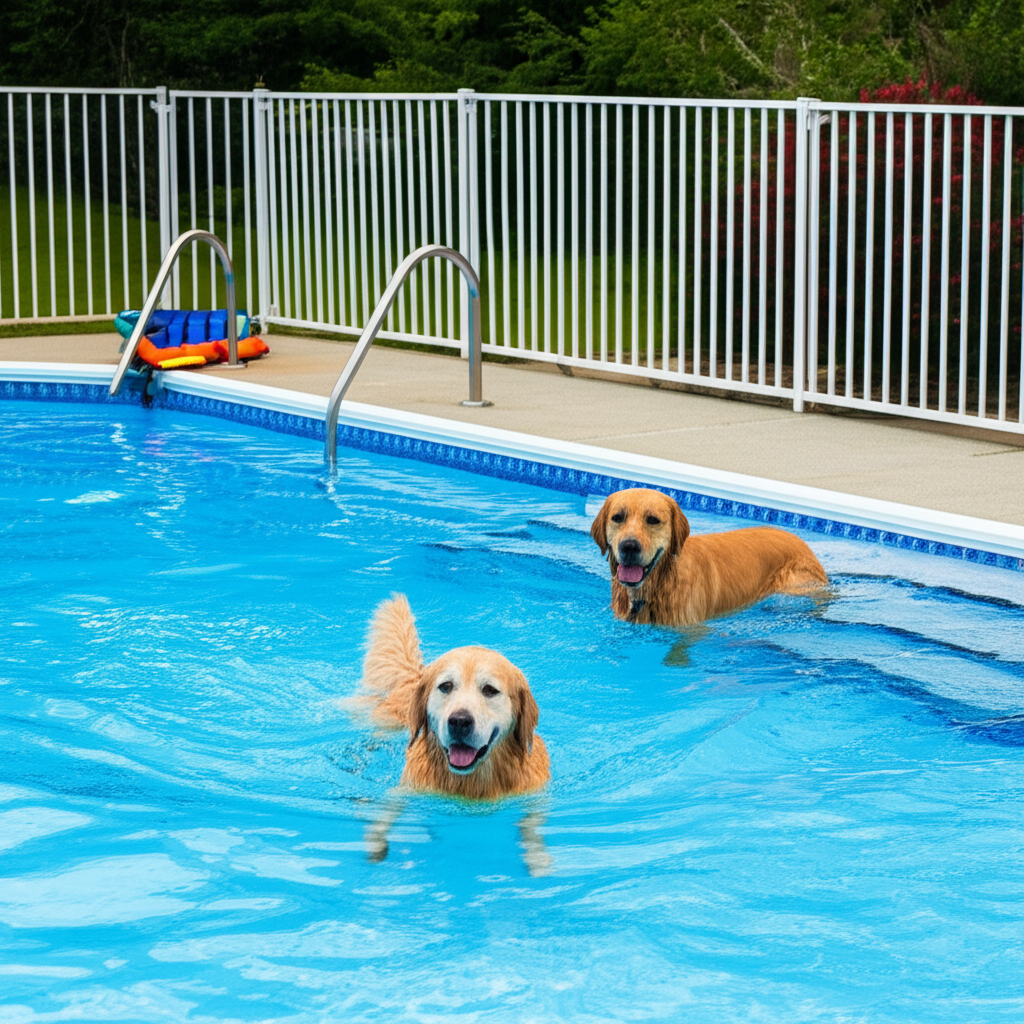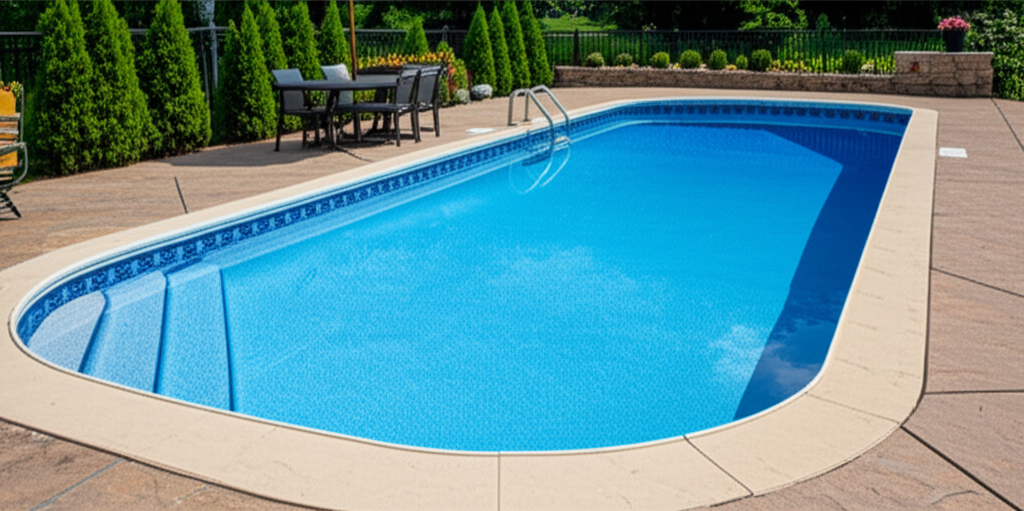- Why Pet Pool Safety Matters
- Essential Gear for Your Dogs in Pool Adventures
- Training and Supervision for a Safe Pool Experience
- Keeping the Pool Environment Safe
- Post-Swim Care for Happy, Healthy Pets
Pet Safety Pool is paramount for any household with furry friends and a swimming pool. While the idea of your dog splashing happily in the water might seem idyllic, pools can pose significant risks if proper precautions aren’t taken. Ensuring your pets can enjoy the refreshing escape of a pool safely requires a proactive approach, combining essential equipment, careful training, and constant vigilance. This ultimate guide will walk you through everything you need to know to make your pool a safe and enjoyable environment for all your beloved companions.
Why Pet Pool Safety Matters
Many pet owners assume their dogs are natural swimmers. While some breeds are certainly more adept in the water, a surprising number of dogs struggle, and even strong swimmers can get into trouble. Drowning is a real and tragic possibility, but it’s not the only danger. Exhaustion, hypothermia, chemical ingestion, and injuries from slippery surfaces are also common risks. Understanding these potential hazards is the first step toward creating a secure aquatic environment for your pets. Remember, a moment of lapsed supervision can have devastating consequences, making prevention and preparedness absolutely critical.
Essential Gear for Your Dogs in Pool Adventures
When it comes to enjoying the water, providing the right gear is non-negotiable for dogs in pool settings. These tools can make the difference between a fun swim and a terrifying ordeal.
Pet Life Vests: This is arguably the most important piece of safety equipment. A well-fitting life vest provides buoyancy, helping your dog stay afloat, conserves energy, and often includes a handle for easy retrieval. Look for vests with bright colors for visibility and adjustable straps to ensure a snug, comfortable fit. Even strong swimmers can benefit from a vest during extended play or in unfamiliar waters.
Pool Ramps or Steps: Pets often jump into a pool but struggle to find a way out, especially if the exit points are designed for humans. Pet-specific ramps or steps provide an easy-to-locate and accessible exit. These can be secured to the side of the pool, allowing your dog to climb out independently, reducing the risk of exhaustion. Train your dog repeatedly to use this exit point so it becomes second nature.
Safety Fencing: A robust fence around your pool is the ultimate barrier to accidental entry. Ensure it’s tall enough (at least 4-5 feet) to prevent jumping over and that gates are self-latching and self-closing. The fence should have no gaps large enough for a pet to squeeze through. This is particularly crucial for homes with puppies, small dogs, or adventurous cats.
Alarm Systems: While not a replacement for a fence, pool alarms can provide an extra layer of security by alerting you if a pet falls into the water. Some systems use sensors that detect movement in the water, while others are worn by the pet.
Training and Supervision for a Safe Pool Experience
Even with all the right gear, proper training and constant supervision are irreplaceable.
Swim Lessons: Don’t assume. Introduce your dog to the water gradually, in a positive and encouraging manner. Start in shallow areas, offering praise and treats. Never force your dog into the water, as this can create a lifelong fear.
Teach Exit Points: As mentioned, repeated training to show your dog where and how to exit the pool is vital. Place the ramp or steps in an easily identifiable spot and guide your dog to it every single time they enter and exit.
Constant Supervision: This cannot be stressed enough. Never leave a pet unsupervised near a pool, even for “just a minute.” Accidents happen quickly and silently.
Know Your Pet’s Limits: Pay attention to signs of fatigue, such as heavy panting, slowing movements, or struggling to keep their head above water. Encourage breaks and hydration.
Keeping the Pool Environment Safe
Beyond the immediate water, the surrounding pool area also requires attention to pet safety.
Pool Chemicals: Store all pool chemicals securely, out of reach of pets. Test your pool water regularly to ensure chemical levels are safe. After a swim, always rinse your pet thoroughly with fresh water to remove chlorine or other chemicals that could irritate their skin, eyes, or be ingested during grooming.
Pool Covers: Use a sturdy, weight-bearing safety cover when the pool is not in use. Loose-fitting solar covers or tarps can be extremely dangerous, as pets can fall in and become trapped underneath, making it impossible to surface.
Around the Pool: Keep the deck clear of toys, tools, or sharp objects. Be mindful of hot concrete or decking that can burn paws during summer months. Ensure there’s plenty of shade and fresh, cool water available.
Emergency Preparedness: Have a pet first-aid kit readily available and know the signs of drowning or heatstroke. Learn basic pet CPR and have your veterinarian’s contact information (and the nearest emergency vet) easily accessible.
Post-Swim Care for Happy, Healthy Pets
After a fun pool session, a little post-swim care goes a long way in keeping your pet healthy and preventing common issues.
Thorough Rinse: Always rinse your dog with fresh water after swimming to remove chlorine, salt, or other pool chemicals that can dry out skin, irritate eyes, or be ingested during self-grooming.
Ear Cleaning: Doggie ears, especially those of breeds with floppy ears, are prone to ear infections. Moisture trapped in the ear canal creates a perfect breeding ground for bacteria and yeast. Use a veterinarian-approved ear cleaner to dry out and clean their ears after every swim.
Drying: Dry your dog thoroughly, paying special attention to hard-to-reach areas like paw pads and armpits to prevent skin irritation or hot spots.
Hydration: Offer plenty of fresh, clean drinking water. Pets can inadvertently swallow a lot of pool water, which isn’t suitable for hydration.
* Check Paws: Inspect their paw pads for any cuts, abrasions, or signs of irritation from rough pool surfaces.
By following these guidelines, you can transform your swimming pool from a potential hazard into a source of endless joy and refreshing fun for your beloved pets. A little preparation and consistent attention to pet safety pool measures ensure that happy memories are the only thing you’ll be making by the water’s edge.



